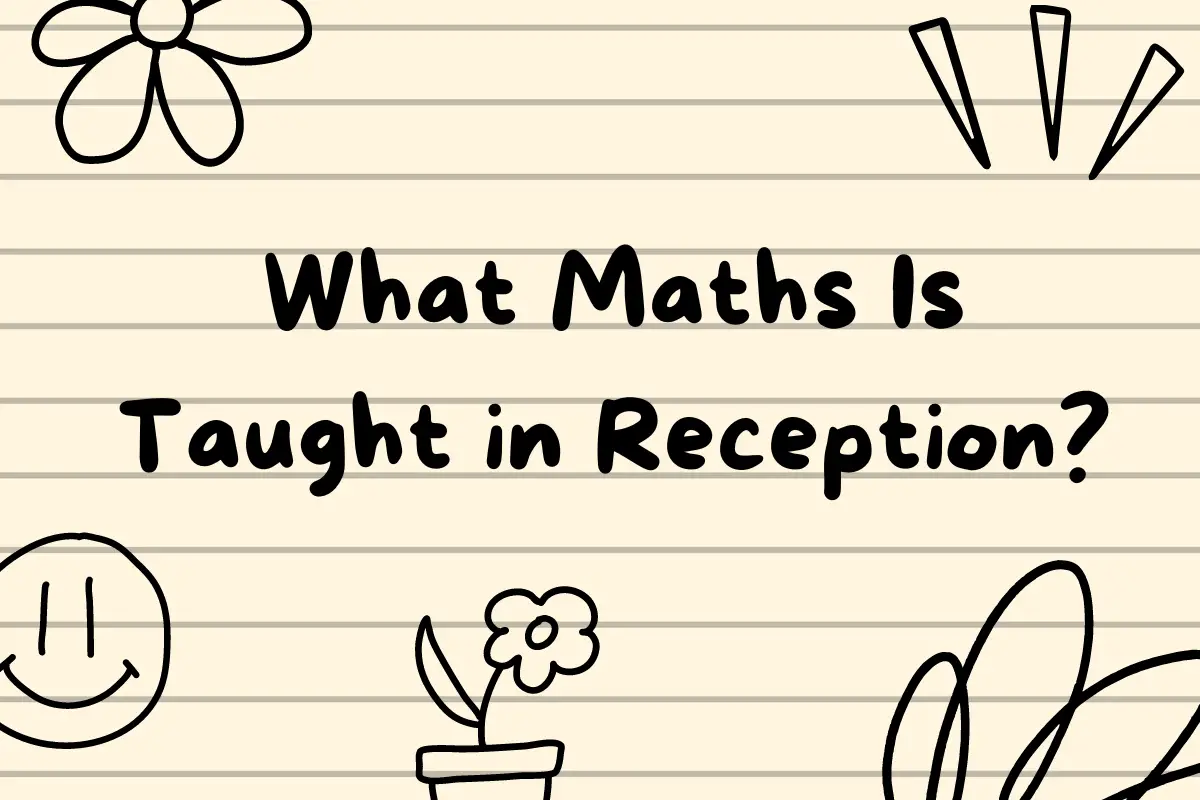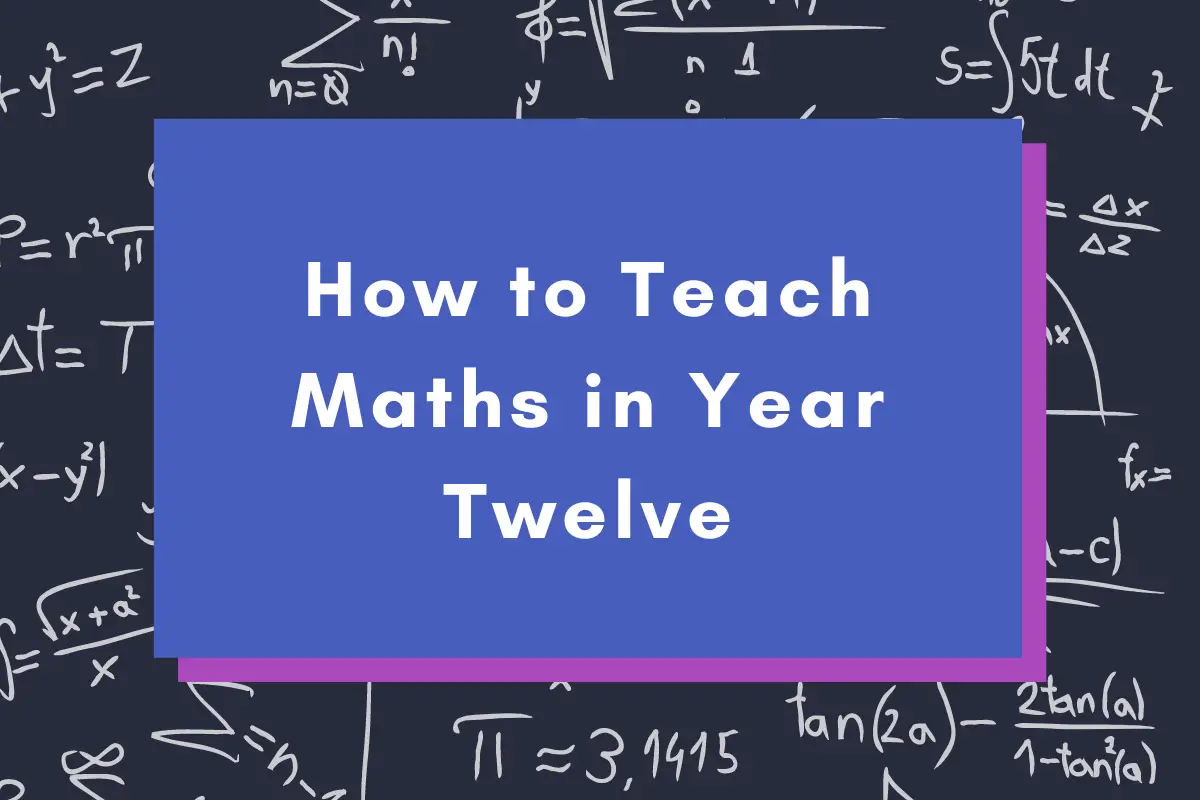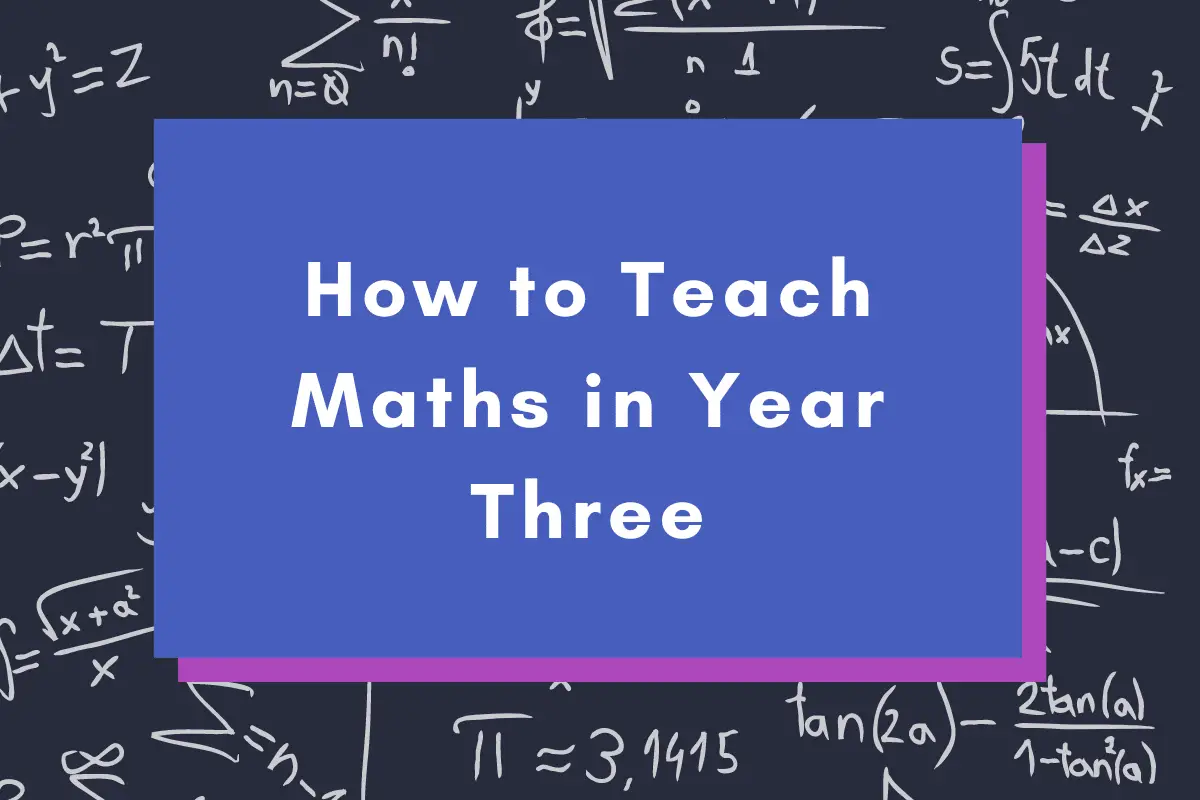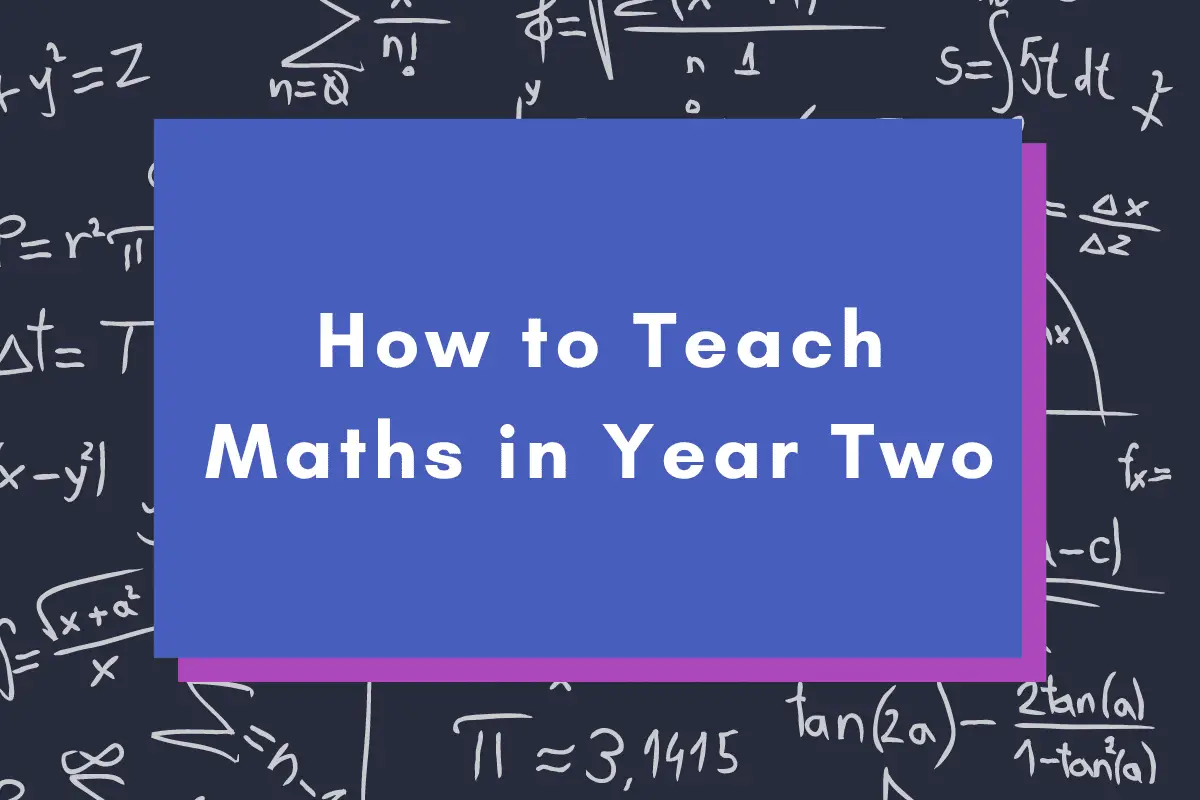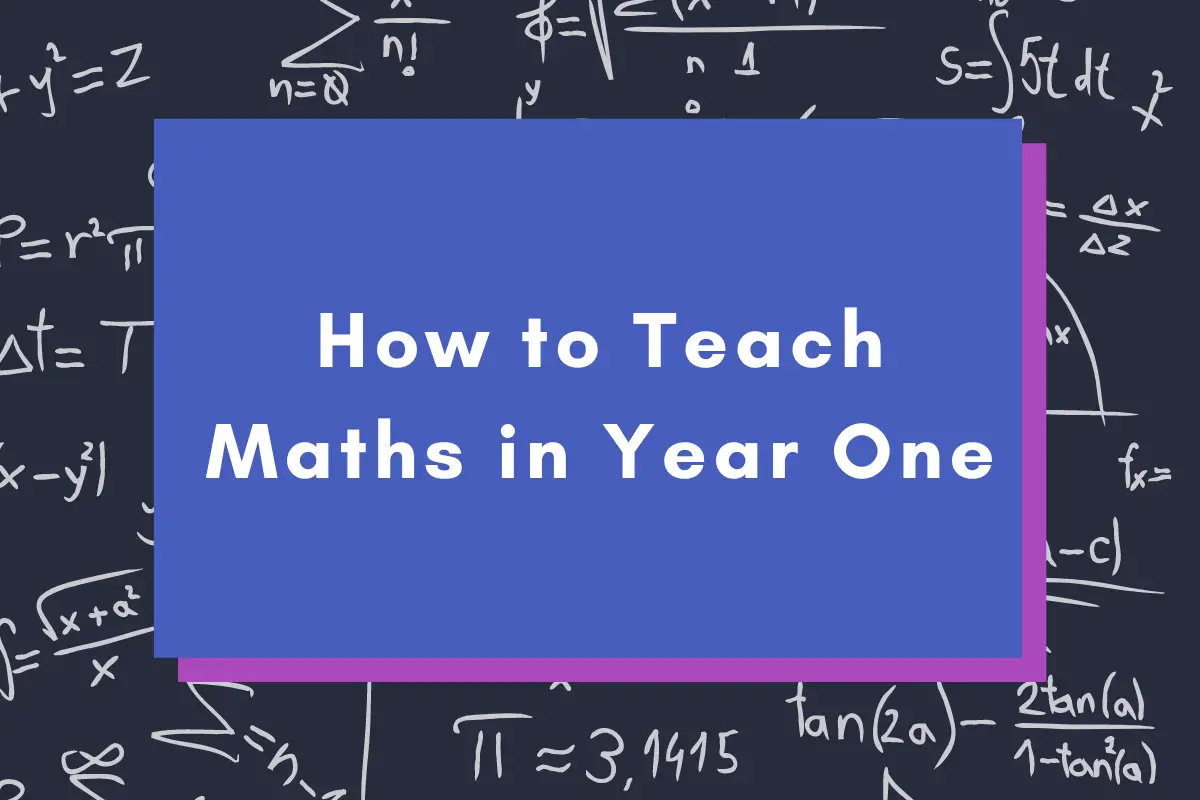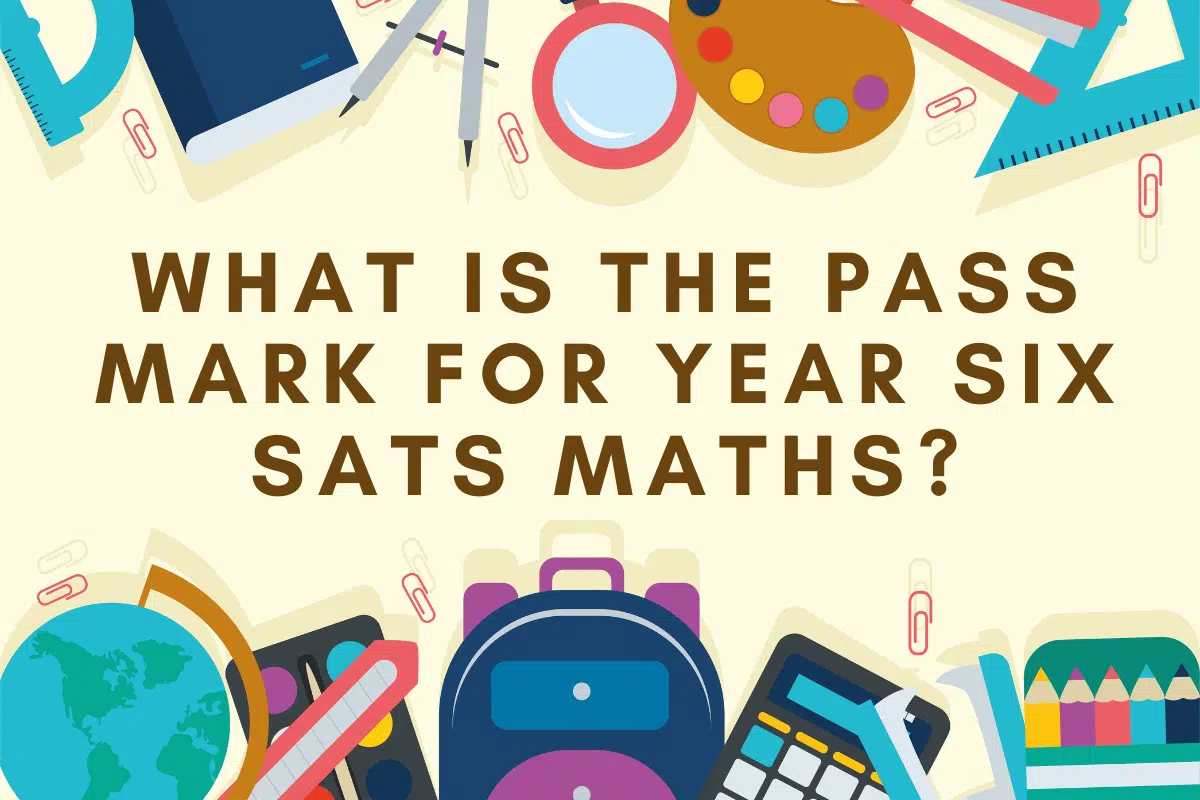Teaching maths to Year 11 students requires a multifaceted approach that not only builds on their foundational knowledge but also prepares them for significant examinations, such as their GCSEs.
At this pivotal stage, students must have a firm understanding of core concepts which serve as building blocks for more complex mathematical theories and problems.
Teachers have the vital role of guiding learners through the intricacies of algebra, trigonometry, and calculus while nurturing their problem-solving abilities.
Related: For more, check out our article on How To Use Concrete, Pictorial and Abstract Resources In Maths

Educators need to strike a balance between theoretical understanding and practical application. This entails equipping students with the necessary calculation skills that extend to real-world scenarios, enhancing their numerical literacy.
Moreover, introducing pupils to the nuances of geometry and statistics allows them to analyse and interpret data effectively.
A successful maths teacher for Year 11 leverages varied resources and develops well-structured exam preparation strategies to ensure each student can approach their assessments with confidence.
Key Takeaways
- Students must master core mathematical principles and calculations to succeed in Year 11 maths.
- Practical application and data interpretation are crucial skills for comprehensive maths education.
- Effective exam preparation and resource utilisation are key for student success in Year 11.
Related: For more, check out our article on How To Teach Maths In Year Ten
Understanding Core Maths Concepts
In Year Eleven, it is pivotal to ensure that students have a strong grasp of core maths concepts to prepare them for their GCSE examinations and further education.
Mastery of these concepts will enable them to approach problems with confidence and apply mathematical principles effectively.
Ratio and Proportion
Students should be adept at identifying and solving problems that involve comparing quantities. This includes understanding:
- Ratios as a tool to compare quantities
- Proportionality in various forms, including direct and inverse proportion
Fractions, Percentages, and Averages
These foundational elements should be approached with an emphasis on practical application:
- Converting between fractions, decimals, and percentages
- Computing averages (mean, median, and mode), a crucial skill in data interpretation
Number and Place Value
A solid understanding of number systems is essential:
- Comprehending place value to handle large numbers with confidence
- Performing calculations with positive and negative integers
Algebra
Equipping students with algebraic skills allows them to articulate and solve equations:
- Simplifying expressions and manipulating algebraic formulas
- Solving linear and quadratic equations
For teachers, employing diverse strategies such as contextualised problem-solving can enhance understanding and engagement.
The application of Core Maths subject knowledge is crucial, which can be enriched by utilising pedagogy and programme resources from dedicated maths education platforms.
Supporting students to achieve fluency in core maths concepts is not only necessary for their exams but also for their lifelong numeracy skills.
Related: For more, check out our article on How To Teach Maths In Year Nine
Developing Calculation Skills
Developing calculation skills in Year 11 is fundamental to ensuring students have a strong mathematical foundation.
Mastery of basic operations is critical, and as students progress, they apply these skills to more complex algebraic concepts and real-world problems.
Mastering the Four Operations
Students must be proficient in the four basic arithmetic operations: addition, subtraction, multiplication, and division. They should be able to:
- Add and subtract with positive and negative numbers fluently.
- Accurately multiply numbers, including multi-digit operations and working with powers.
- Understand division as both sharing and grouping, performing divisions that result in whole numbers and fractions.
Teachers can employ various methods to build these skills, incorporating maths games to make learning engaging and interactive.
Advancing with Algebra
To progress in mathematics, students must transition to algebraic thinking. They should be able to:
- Simplify algebraic expressions using the proper order of operations.
- Solve equations and inequalities that involve variables.
- Develop and work with formulae for areas of shapes or other scientific and mathematical applications.
Utilising government guidelines can help structure their learning path.
Applying to Real World Contexts
Application of mathematical skills to real-world contexts cements understanding and emphasises practicality. Students should demonstrate:
- Problem-solving skills, applying arithmetic and algebra to tackle problems related to everyday situations like budgeting or measuring distances.
- The use of mathematics in interpreting data, developing intuitiveness in statistical analysis or geometry.
Encouraging the application of these skills through projects such as rewriting a recipe book offers students a tangible method to appreciate mathematics in daily life.
Related: For more, check out our article on How To Teach Maths in Year Eight
Exploring Geometry and Measures

Exploring Geometry and Measures in Year Eleven involves a deepened understanding of spatial relationships and precise calculations.
Students develop skills in visualising shapes and accurately applying measurements to solve complex problems.
Understanding Shapes and Spaces
In Year Eleven, students must comprehend the intricacies of various shapes and the spaces they occupy.
Geometry is the branch of mathematics concerned with the properties and relations of points, lines, surfaces, solids, and higher-dimensional analogues.
Polygons serve as a key focus, with an emphasis on the attributes and hierarchy of shapes, from triangles to n-sided figures.
Students should become adept at using constructions to create precise geometrical shapes with only a compass and straightedge.
Understanding loci, which refers to a set of points that share a property, forms the basis for more complex problem-solving scenarios. It’s pivotal for students to grasp how geometric principles underpin real-world structures and designs.
Working with Measurements
Measurements are fundamental in Year Eleven, allowing students to quantify physical quantities in the world around them.
Students must be proficient in a range of units of measurement, which includes mastering metric and imperial systems and understanding when and how to convert between the two.
- In scale drawings, students explore how maps and models represent larger spaces, applying the concept of ratio to their work.
- Mastery of angle facts is crucial; students should be able to calculate angles within various geometric figures and understand the rules that govern the sum of angles in polygons.
- When looking at bearings, students learn to describe direction and navigate using angles measured clockwise from North, applying their knowledge in practical contexts.
The integration and application of these concepts are essential, as they allow students to transition from theoretical understanding to practical application in real-life situations.
Related: For more, check out our article on How To Teach Maths In Year Seven
Interpreting Data and Statistics

Year Eleven students are expected to consolidate their understanding of interpreting data and statistics, focusing on effectively collecting data and analysing it through various graphical representations.
Mastery in this area is crucial for their success in examinations and practical applications.
Grasping the Basics of Data Collection
Data collection forms the foundation of statistics. Students should be proficient in identifying appropriate data collection methods, which include surveys, experiments, and observational studies.
They learn to organise data methodically using tools such as frequency trees and Venn diagrams to facilitate easier analysis.
Additionally, they should understand the importance of collecting representative samples to ensure their statistics accurately reflect the population.
Analysing with Graphs and Charts
Once data is collected, students must interpret and present it. They must be able to construct and analyse line graphs and pie charts to identify trends and make predictions.
The use of graphs is extended to understanding tree diagrams, which are employed for probability and to show branching data paths.
Students should be adept at calculating the mean as a measure of central tendency, and how it complements visual representations for comprehensive data analysis.
Related: For more, check out our article on How To Teach Year Six Maths
Strengthening Problem-Solving Skills

Developing problem-solving skills is crucial for Year Eleven students as they prepare for their GCSE examinations.
This involves not just solving equations and working with simultaneous equations but also applying these skills to a variety of problem-solving questions that cover real-world concepts such as direct proportion and best buy.
Utilizing Mathematical Models
Students should be encouraged to visualise problems using mathematical models. This can translate abstract concepts into concrete examples, aiding understanding.
For instance, in approaching questions on direct proportion, they can create tables or graphs to represent relationships.
Here, teachers can incorporate practice papers that utilise model drawing, allowing learners to see the tangible links between mathematical expressions and their visual representations.
- Example:
- Direct Proportion: If ( y ) is directly proportional to ( x ), students can plot graphs to observe the linear relationship. They can then use these graphs to predict values of ( y ) for any given ( x ).
Refining Examination Techniques
As part of the national curriculum, students must refine their examination techniques. This involves understanding the types of problem-solving questions that commonly appear on GCSE practice papers.
Techniques such as identifying relevant information, discarding superfluous details, and logically working through simultaneous equations are key.
By regularly practising with past examination papers, students become adept at identifying what the question requires and the steps needed to solve it.
- Tips for Teachers:
- Provide a variety of GCSE practice papers to familiarise students with different types of questions.
- Role-play as an examiner, illustrating how to mark answers and explaining why certain responses receive higher marks. This helps students grasp what is expected in terms of both problem-solving and methodical presentation.
Related: For more, check out our article on How To Use Maths In Year Five
Resources and Exam Preparation
Selecting high-quality resources and a focused approach to exam preparation are crucial for success in Year 11 maths.
It is important to find materials that cover the syllabus effectively, including number and place value, the four operations, and numerical reasoning.
Using Effective Study Materials
When looking for study materials, one should consider a variety of free resources that can complement paid maths tuition.
Websites often offer comprehensive topic lists and study guides specifically tailored to GCSE Maths requirements.
Additionally, utilising multimedia tools like interactive apps can reinforce times tables knowledge and help in consolidating number concepts.
Practising with Past Papers
Regular practice using past papers is essential to gauge exam readiness. Past GCSE Maths papers serve as a valuable resource to understand question formats and to practise time management.
Providers such as GL Assessment and CEM are known for supplying a range of practise papers, which are instrumental for students to identify areas that require further review and preparation.
Related: For more, check out our article on How To Teach Year Four Maths
Frequently Asked Questions

The following questions are critical in enhancing teaching efficacy of Year 11 mathematics. Teachers often seek to leverage effective strategies and practices that promote comprehension and engage students at this stage of their education.
What are effective strategies for conducting online mathematics lessons for Year 11 students?
Teachers have successfully integrated interactive tools such as virtual whiteboards and polling software to encourage participation in online lessons. These strategies facilitate real-time feedback and maintain student engagement throughout the session.
What key mathematical concepts should be covered in the Year 11 mathematics syllabus in the UK?
The Year 11 mathematics syllabus includes topics like algebra, geometry, probability, and statistics. Mastery of these areas is crucial as they provide the foundation for further study and real-world application.
How can educators make Year 11 mathematics engaging and understandable for all foundation level students?
Educators can utilise relatable examples and practical applications to demystify complex mathematical theories. Making maths relevant to everyday life can significantly improve engagement and understanding at the foundation level.
In what ways can teachers employ creative techniques to enhance Year 11 maths learning experiences?
Introducing mathematics through games and interactive quizzes can be highly effective. Creative techniques such as role-playing and simulations could also add an element of fun to learning Year 11 maths.
How can Year 11 mathematics be taught effectively without incurring additional costs for resources?
One can achieve cost-effective teaching by using free online resources and encouraging students to utilise publicly available educational materials. Peer-to-peer learning and open-source applications are also excellent ways to reduce costs.
What best practices should teachers adopt to ensure they are facilitating easy comprehension of Year 11 maths topics?
Teachers should aim to provide clear explanations, scaffold learning, and continuously assess understanding. Using a variety of teaching methods to cater to different learning styles can also aid in the easier comprehension of maths topics.

